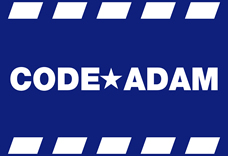Code Adam

Code Adam is a "missing child" safety program in the United States and Canada, originally created by Wal-Mart retail stores in 1994.[1] It is named in memory of Adam Walsh, the 6-year-old son of John Walsh (the host of Fox's America's Most Wanted). Adam was abducted from a Sears department store in Hollywood, Florida in 1981. A search was undertaken by Adam's mother, grandmother and store employees, and public address calls were made for him every 10 to 15 minutes. After approximately 90 minutes of fruitless searching, local law enforcement was called.
Adam's severed head was found sixteen days later. His body was never recovered. Today, many department stores, retail shops, shopping malls, supermarkets, amusement parks, hospitals and museums participate in the Code Adam program. Legislation enacted by Congress in 2003 now mandates that all federal office buildings employ the program.
Wal-Mart along with the National Center for Missing & Exploited Children (NCMEC) and the departments of several state Attorneys General, has offered to assist in training workshops in order for other companies to implement the program. Social scientists point out that the fear of child abduction is out of all proportion to its incidence: in particular they point to the long-term persistence of retail kidnapping narratives in urban legends to highlight how parents have been sensitized to this issue for generations before the Adam Walsh case.[2]
Companies that do implement the program generally place a Code Adam decal at the front of the business. Employees at these businesses are trained to take the following six steps according to the National Center for Missing & Exploited Children:
- If a visitor reports a child is missing, a detailed description of the child and what he or she is wearing is obtained. Additionally, all exterior access to the building is locked and monitored; anyone approaching a door is turned away.
- The employee goes to the nearest in-house telephone and pages Code Adam, describing the child’s physical features and clothing. As designated employees monitor front entrances, other employees begin looking for the child.
- If the child is not found within 10 minutes, law enforcement is called.
- If the child is found and appears to have been lost and unharmed, the child is reunited with the searching family member.
- If the child is found accompanied by someone other than a parent or legal guardian, reasonable efforts to delay their departure will be used without putting the child, staff, or visitors at risk. Law enforcement will be notified and given details about the person accompanying the child.
- The Code Adam page will be canceled after the child is found or law enforcement arrives.[3]
See also
External links
References
- ↑ Missingkids.com
- ↑ Robin Croft (2006), Folklore, families and fear: understanding consumption decisions through the oral tradition, Journal of Marketing Management, 22:9/10, pp1053-1076, ISSN 0267-257X
- ↑ Missingkids.com